Menu Plans For Renal Diabetes Diet
Do you have a loved one with renal diabetes? If so, you know how hard it can be to keep their renal diabetic diet in check.
It's important to make sure they get the right nutrients while avoiding foods that could damage their kidneys or make blood sugar levels too high. That's why having an effective menu plan is essential.
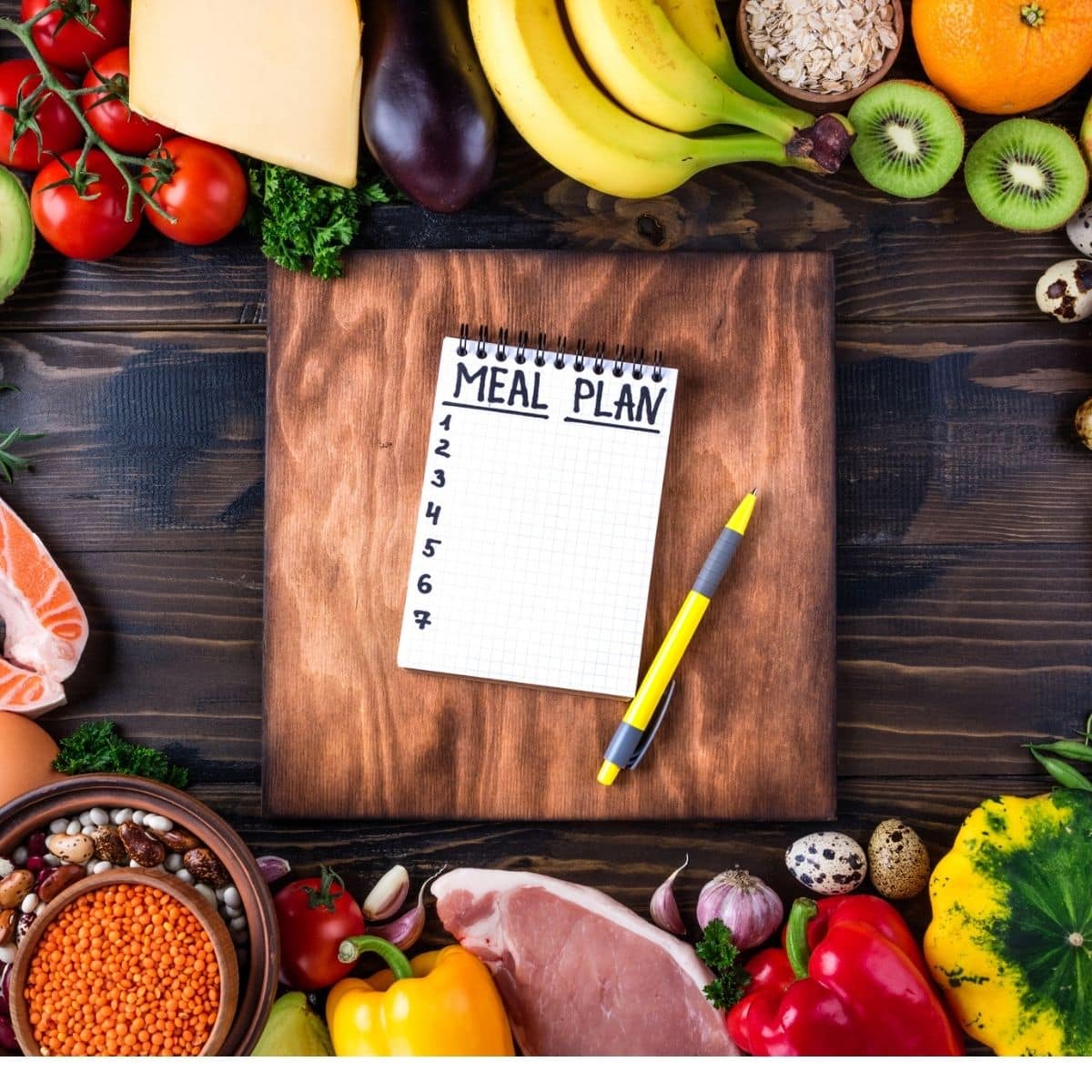
The good news is there are plenty of options out there for creating delicious and nutritious meal plans specifically tailored to your loved one’s needs.
With the right resources, you can create menus that will provide them with the nutrition they need while still being enjoyable to eat.
In this article, we'll cover some tips on how to create healthy renal diabetic menus that everyone in your family can enjoy! So, you may be asking why you may need a diabetic diet or why do I need a pre dialysis diet?! I have the answers for you !
Jump to:
- Understanding The Basics Of A Renal Diabetes Diet
- Eating Nutrient-Dense Foods
- Controlling Sodium, Phosphorus, And Potassium Intake
- Limiting Saturated Fat And Cholesterol
- Incorporating Healthy Fats
- Making Healthy Beverage Choices
- Understanding Low-Carbohydrate Diets
- Meal Planning Ideas for Renal Diabetes
- Working With A Registered Dietitian
- FAQs for Renal Diabetes Menus
- You Can Conquer Renal Diabetes, One Meal At A Time
Understanding The Basics Of A Renal Diabetes Diet
It can be overwhelming to think about planning meals for a diabetic kidney disease diet (renal diabetic diet sample menu), but with the right knowledge and tools, it can be manageable.
Understanding how to plan your meals correctly is key in maintaining good health while living with both diabetes and chronic kidney disease (CKD).
With careful meal planning, you'll learn how to make up nutrient-rich dishes that are still low in sugar, sodium, potassium, and phosphorus. This means reading labels carefully and learning which foods contain these minerals so they don't sneak into your daily intake without you noticing.
You should also aim to eat regularly. Even three well-portioned meals or six smaller meals throughout the day can help maintain blood sugar levels. Practicing mindful eating habits such as recognizing fullness signals rather than continuing until stuffed is also helpful.
Portion size plays an important role too - instead of filling one plate for each person at the table, use smaller plates for everyone so that no one feels deprived or tempted to overeat; this will allow everyone to enjoy healthy portions without feeling restricted from their favorite foods.
With time and commitment, a diabetic kidney disease diet doesn't have to feel like punishment. It's possible to find a balance between delicious food choices and meeting all dietary requirements!
For More Recipes and Ideas --->> Get Your Free Meals and Recipes That Are Perfect for Pre-Dialysis Diets, Pre-Dialysis with Diabetes, or Dialysis Diets.
Eating Nutrient-Dense Foods
Let’s look at which types of fats are beneficial and which should be avoided. It's also important to consider which kinds of proteins are best for a renal diabetic diet and how to choose natural sources of carbohydrates.
Let’s begin to explore how to incorporate nutrient-dense foods into our everyday meals and create meal plans that are balanced and healthy.
Sources of Good Fats
When it comes to eating nutrient-dense foods, healthy fats are an important factor. Adding nuts like almonds and walnuts to salads or snacks is a great way to get in some healthy fat while also adding flavor. Give this kidney friendly almond cookies a try.
Reducing trans fats as much as possible should be a priority, so try switching out processed foods for healthier sources of fat such as olives, avocados, fatty fish like salmon or mackerel, and olive oil when cooking.
All of these can make a big difference when trying to maintain a diabetic kidney diet.
By making smart choices when it comes to selecting nutritious fats, you’ll be able to keep your blood sugar levels stable and stay on track with your meal plan.
Protein Sources
Now that we've discussed healthy fats, let's move on to another important aspect of eating nutrient-dense foods: protein sources.
If you have diabetic nephropathy, but not yet undergoing maintenance dialysis treatment sessions, you should limit protein intake to 0.6 to 0.8 grams per kilogram per day.
It's a good idea to minimize animal proteins when possible and incorporate more plant based proteins into your diet instead.
Vegan diets are becoming increasingly popular due to the health benefits they provide, so if you're looking for more options consider switching some meals to vegan alternatives.
Be sure to keep an eye out for food labels that indicate nutritional information such as carb counts and watch out for hidden sugars too!
For non-vegan sources of protein, healthy sources include chicken, turkey, most seafood, fish, eggs and egg substitutes.
With careful consideration, you can find nutritious protein sources that fit within the recommendations from your doctor or nutritionist.
Carbohydrate Sources
Now that we've explored protein sources, let's look at carbohydrates. Carbohydrates are a key part of any meal plan and should be consumed in proper portion sizes to ensure you're getting the right amount of energy throughout the day.
It's important to keep an eye on your meal timing too - having regular meals every 3-4 hours will help regulate blood sugar levels while ensuring consistent nutrient intake.
Additionally, incorporating high fiber foods such as beans, lentils, and oats into your diet is not only beneficial for digestion but can also help reduce cholesterol levels. Here is a 7 day cholesterol diet menu worth checking out.
Finally, when selecting carbs, it's essential to consider the glycemic index of each food item and make sure your choices fit within your doctor or nutritionist's recommendations regarding carbohydrate consumption.
Controlling Sodium, Phosphorus, And Potassium Intake
Controlling sodium, phosphorus, and potassium intake is essential in managing renal diabetes. Low-sodium meals are key, and substitutes like salt-free spices can be used.
Low-phosphorus and low-potassium meals should also be included, with phosphorus-free sweeteners and potassium-free condiments.
There are plenty of sodium-reduced, phosphorus-reduced, and potassium-reduced recipes to try, as well as snacks. Finally, if you want to add flavor without adding sodium, phosphorus, or potassium, there are plenty of seasonings and condiments for kidney disease to choose from!
Controlling Sodium
Tracking your sodium intake is important for those on a kidney diet. For patients with kidney disease, it is best to consume less than 2000 milligrams of sodium per day.
To stay within these limits, you'll need to avoid processed foods and read nutrition labels carefully when shopping. Look for low-sodium alternatives like herbs that can be used in place of table salt to add flavor.
You can also look into herbal blends designed specifically for renal diets, as these are often lower in sodium than store-bought seasonings. It's important to know the proper renal diet restrictions.
Phosphorus
Next up in our discussion is the importance of reducing your phosphorus intake. Phosphorus levels can be controlled by limiting intake between 800 and 1000 milligrams per day.
Eating processed foods, dairy, and milk products that are high in phosphates should be avoided as they can increase your risk for kidney damage. Instead, focus on healthy sources such as nuts, legumes, and whole grains.
It’s also important to monitor your levels regularly since too much phosphorus can lead to problems like calcium deficiency.
Knowing how much phosphorus you're consuming each day is key for staying healthy keeping complications away. This may good time to learn how to improve bun level.
Potassium Intake
Just like with phosphorus and sodium, it's important to monitor your potassium levels regularly. For people with kidney disease, they should consume less than 3 grams of potassium per day.
Eggs, fish, vegetables, grain, oats, and tofu are just some of the popular low potassium options that you can incorporate in your diabetic diet menu plan.
Ultimately, understanding how much potassium you're consuming each day and working towards maintaining a balanced diet will help ensure complications from excessive potassium are avoided.
Limiting Saturated Fat And Cholesterol
People with diabetes and chronic kidney disease are at risk for cardiovascular disease as well. To help mitigate this, it’s important to limit saturated fat and cholesterol with a renal diabetes diet by eating lean meats, lowering fat intake, avoiding processed foods, and choosing low-fat dairy.
Saturated fats can be replaced with unsaturated fats, increase fiber intake, avoid trans fats, minimize egg yolk intake, eat fish, reduce processed foods and CKD, choose healthy fats, eat whole grains, choose plant-based proteins, avoid added sugars, and focus on plant-based foods.
Eating Lean Meats
Healthy eating plans for renal diabetes diet should be packed with nutrient-rich proteins, but still low in saturated fat and cholesterol. Choosing lean meats is an important part of keeping this balance.
Lean chicken, turkey, or fish are great examples that you can easily make tasty dishes with.
Cooking methods also matter in making sure fat intake is reduced. Grilling is an excellent way to prepare lean meats without adding extra fats. Plus, creative grilling ideas can add delicious flavors while still delivering on nutrition.
Lowering Fat Intake
The best way to do this is by lowering portion sizes while cutting down on fatty and processed foods. Adding fiber can also help in reducing fat, as well as increasing your vegetable intake.
Eating plenty of fresh fruits and veggies will give you all the vitamins and minerals needed for a healthy diet without loading up on fats. You may find this low fat low cholesterol diet menu worth checking out if you're trying to lower your fat intake.
Incorporating Healthy Fats
Eating healthy fats can have some major benefits for our health, such as lowering bad cholesterol, increasing good cholesterol, and helping to reduce inflammation.
Hence, it will be good to try using healthy fats in some of our recipes, like adding nuts to salads, using olive oil in dressings, and making salmon burgers with avocados.
Sources Of Healthy Fats
These days, it's essential to keep track of the fats we're eating when following a renal diabetes diet. But don't worry - there are plenty of healthy sources out there! Great sources of healthy fats are foods like olive oil, avocados, nuts, and salmon.
For plant-based options, choosing the right kinds of vegan fats can make all the difference. When choosing these, try to opt for saturated or unsaturated varieties that have been minimally processed.
For fat substitutes, avocado makes a great addition to any meal due to its high monounsaturated fatty acid content. Other vegan options include chia seeds, olive oil, olives, nuts and nut butter like peanut butter (vegan renal diet recipes).
Finally, tracking your intake of healthy oils will help ensure you stay on top of your health goals while also enjoying delicious meals in line with your dietary requirements.
Benefits Of Healthy Fats
When it comes to eating mindfully and following a renal diabetes diet, incorporating healthy fats into your meals is an important part of the equation.
Not only do they taste great, but these wholesome ingredients can also help improve cholesterol levels and reduce blood sugar - perfect for those with diabetes.
Plus, by tracking portion control and monitoring your intake of nutritious oils such as olive oil, coconut oil, avocado, chia seeds, and nuts/nut butter, you'll be able to enjoy delicious meals on top of looking after your health goals.
Healthy fats are incredibly beneficial to our bodies; from reducing inflammation, to lowering risk for heart disease, to improving cholesterol levels, and regulating blood sugar levels.
Incorporating healthy fats into a renal diabetes diet can be helpful promoting good overall health. Plus, these healthy fats can add unique flavors to your meals.
Recipes With Healthy Fats
Cooking up tasty and nutritious meals that incorporate healthy fats doesn’t have to be a difficult task. There are plenty of delicious recipes out there that can help you get the most out of your renal diabetes diet - from grilled fish with olive oil to avocado salads, seeds snacks and a multitude of smoothies!
Not only do these dishes provide essential vitamins like Omega 3 fatty acids, but they taste great too. Plus, many of them can also be made in bulk for easy meal prepping throughout the week! Use these meal prep for kidney disease patient tips.
Making smart choices when it comes to nutrition and portion control should always be top priority when following any kind of kidney-friendly eating plan.
With all the amazing recipes available today, we no longer have to sacrifice flavor for health - making eating mindfully even easier than before.
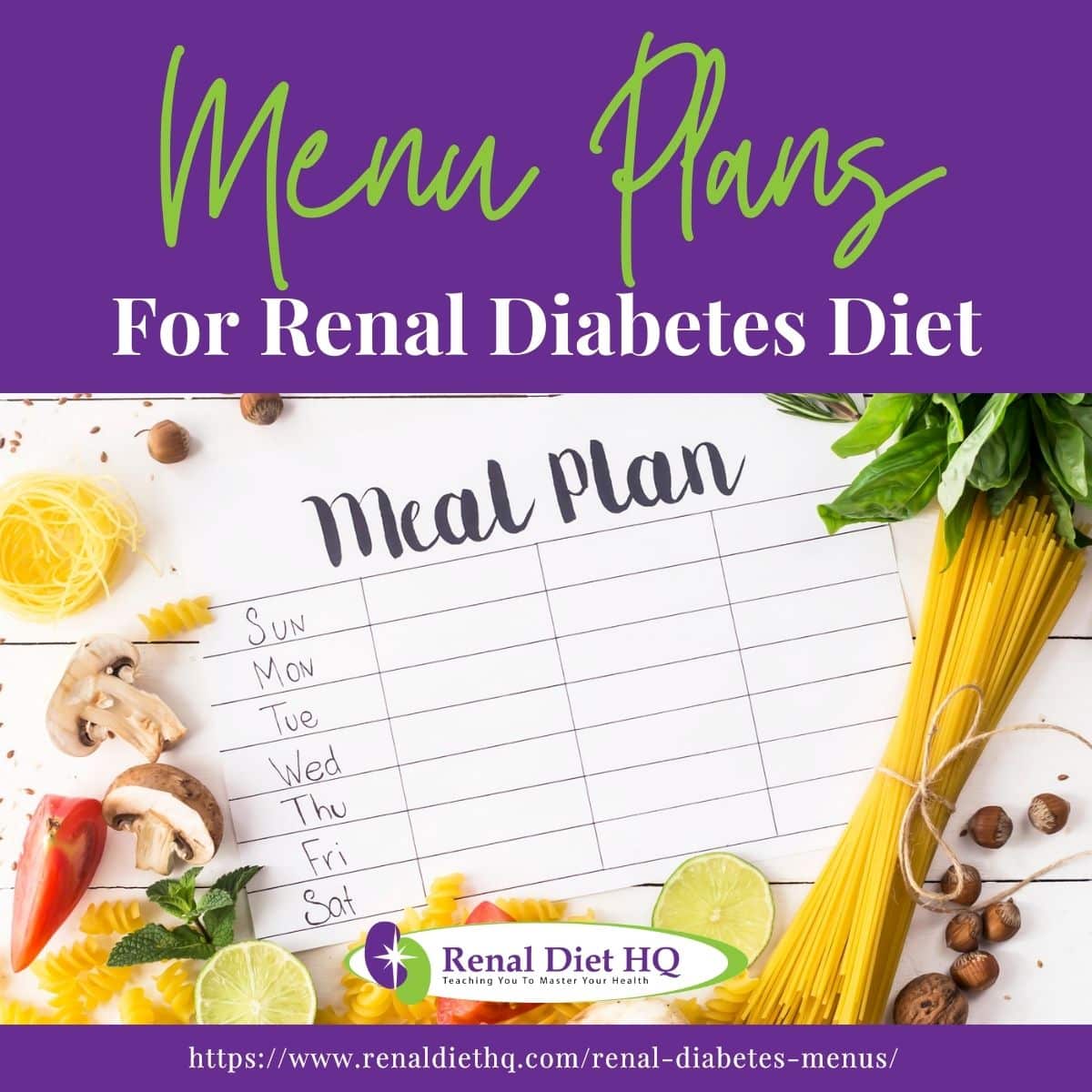
Making Healthy Beverage Choices
Low-sugar drinks are an important part of a renal diabetes diet. This is especially important as depending on the stage of your kidney disease, you may need to watch not only your sugar intake, but your fluid intake, too.
Low-Sugar Drinks
Are sugar-free energy drinks bad for your kidneys? It's important to make healthy beverage choices when following a renal diabetes diet, and that includes low-sugar drinks. Additionally, there are several sugar-free drinks on the market that can make great alternatives to sugary drinks.
Not only can alternative sweeteners help reduce cravings for sugary beverages, but they also provide better control of blood sugar levels.
Natural juices can be a great option too, as long as they're unsweetened and low in sodium. When looking for healthier swaps, it's essential to read nutrition labels carefully so you know exactly what ingredients are in the drink - this will ensure you're making an informed decision about what’s best for your body.
It's important to remember that moderation is key when it comes to drinking these beverages, as too much can still be unhealthy. With a bit of knowledge and planning, we can make healthy beverage choices that fit into our renal diabetes diet.
Drinking Water
Staying hydrated is a key part of making healthy beverage choices when following a renal diabetes diet. It’s important to know your water intake, as well as the quality of the water you're drinking – both have an effect on your health and wellbeing.
There are some great tips that can help you create a plan for getting enough water each day while ensuring that you do not go beyond your fluid limit.
Consider where your water is coming from – whether it be bottled or tap; filtered or unfiltered. Make sure that you get your water from safe sources. Knowing which sources provide clean, safe water will keep you feeling energized and refreshed while helping to reduce cravings for sugary drinks.
Keep in mind that if you don't feel like drinking plain old water, there are other options available too. You can try infused water or unsweetened tea, but make sure to follow fluid restrictions set by your doctor.
Remembering these simple drinking tips will ensure you get all the benefits of staying hydrated without compromising your health. Keep in mind there are also foods high in water.
Natural Juices
When it comes to enjoying natural fruit juices while following a renal diabetes diet, there are many benefits. Not only can natural juices provide a healthy alternative to sugary drinks, but you can also get creative and try new recipes!
By blending fruits together or juicing different vegetables, you can create delicious and nutritious beverages that don’t contain any added sugar. Plus, making your own juice gives you control over the ingredients so you know exactly what is going into your body.
With just a bit of effort, you can easily make tasty concoctions at home – perfect for treating yourself without compromising on health! When making juices for kidney disease, it’s important to be mindful of potassium content as well. Some examples of low potassium natural juices you can enjoy include:
- Apple Juice
- Grape Juice
- Cranberry Juice
- Beet Juice
- Peach Nectar
- Mango Nectar
- Papaya Nectar
- Pineapple Juice
Whether looking to enjoy some of nature's finest flavors or in need of some revitalizing energy drink alternatives, juicing has got you covered. With your dietary restrictions in mind, natural juices can be a part of your healthy eating plan.
Understanding Low-Carbohydrate Diets
Let's look at the types of low-carb diets available, like the ketogenic diet, Atkins diet, and Paleolithic diet. Then, we can look at the potential benefits of low-carb eating, like weight loss and improved blood sugar control. We can also discuss which type of diet may be best suited for those with renal diabetes.
Types Of Low-Carb Diets
Are you looking for meal planning ideas to follow a renal diabetes diet? Low-carb diets are popular among people with kidney disease, as they can help manage blood sugar levels. But you need to be careful because the amount of protein that they recommend can be too much for someone with CKD.
Let’s dive into the different types of low-carb diets and how they work so that you can choose which one is right for you. The right low sodium and low carb recipes can help you with this lifestyle.
The Ketogenic Diet is a high-fat, adequate-protein, and low-carbohydrate diet. The main purpose of this diet is to force the body to burn fats instead of carbohydrates.
Pros of the ketogenic diet include weight loss, improved cholesterol levels, and increased mental clarity. However, some of the cons include potential side effects such as headaches, fatigue, dehydration, and constipation.
The Atkins Diet is a low-carbohydrate diet that focuses on eating foods high in protein and fat. The main goal is to reduce carbohydrates and increase healthy fats in the diet to ultimately aid in weight loss.
Pros of the Atkins diet include potential weight loss, improved cholesterol levels, and increased energy. Cons of the Atkins diet include potential side effects such as headaches, constipation, and bad breath.
The Paleo Diet is a diet that is based on the type of foods that were eaten by our Paleolithic ancestors. This includes lean meats, fruits, vegetables, nuts, and seeds. Pros of the Paleo diet include potential weight loss, improved cholesterol levels, and increased energy.
Cons of the Diet
Cons of this diet include potential side effects such as headaches, constipation, and bad breath. Additionally, this diet is not sustainable in the long-term and can be difficult to adhere to.
When it comes to food selection on a low-carb plan, carbohydrates should be limited while increasing your intake of healthy fats and protein.
Carbohydrate counting and portion control are key components in making sure your daily carb allowance stays within range.
Water intake is also important, since staying hydrated helps keep your kidneys healthy by flushing out toxins from your body and reduces constipation.
A registered dietitian or nutritionist can provide diabetic diet menu plans tailored specifically to meet the needs of someone following a renal diabetes diet.
With their guidance, you'll have access to personalized advice about what foods to focus on and how much carbohydrate to include in each meal.
In all, remember to consult your doctor first before starting any new type of diet as what works for others might not work for you.
Benefits Of Low-Carb Eating
Low-carbohydrate diets may be beneficial for people with renal diabetes. Eating fewer carbohydrates can help control blood sugar levels. Opting for more fruits and vegetables also means that more fiber is consumed as part of a balanced diet.
In addition, by focusing on eating whole grains and avoiding processed and refined foods, you'll be able to monitor your blood sugar levels better while still enjoying meals. This type of lifestyle change can provide many health benefits without sacrificing taste or variety.
Ultimately, incorporating low-carb principles into your meal planning can make managing kidney disease easier and improve overall wellness especially when you also have diabetes. If you need more ideas, here are some low carb low potassium foods worth consuming!
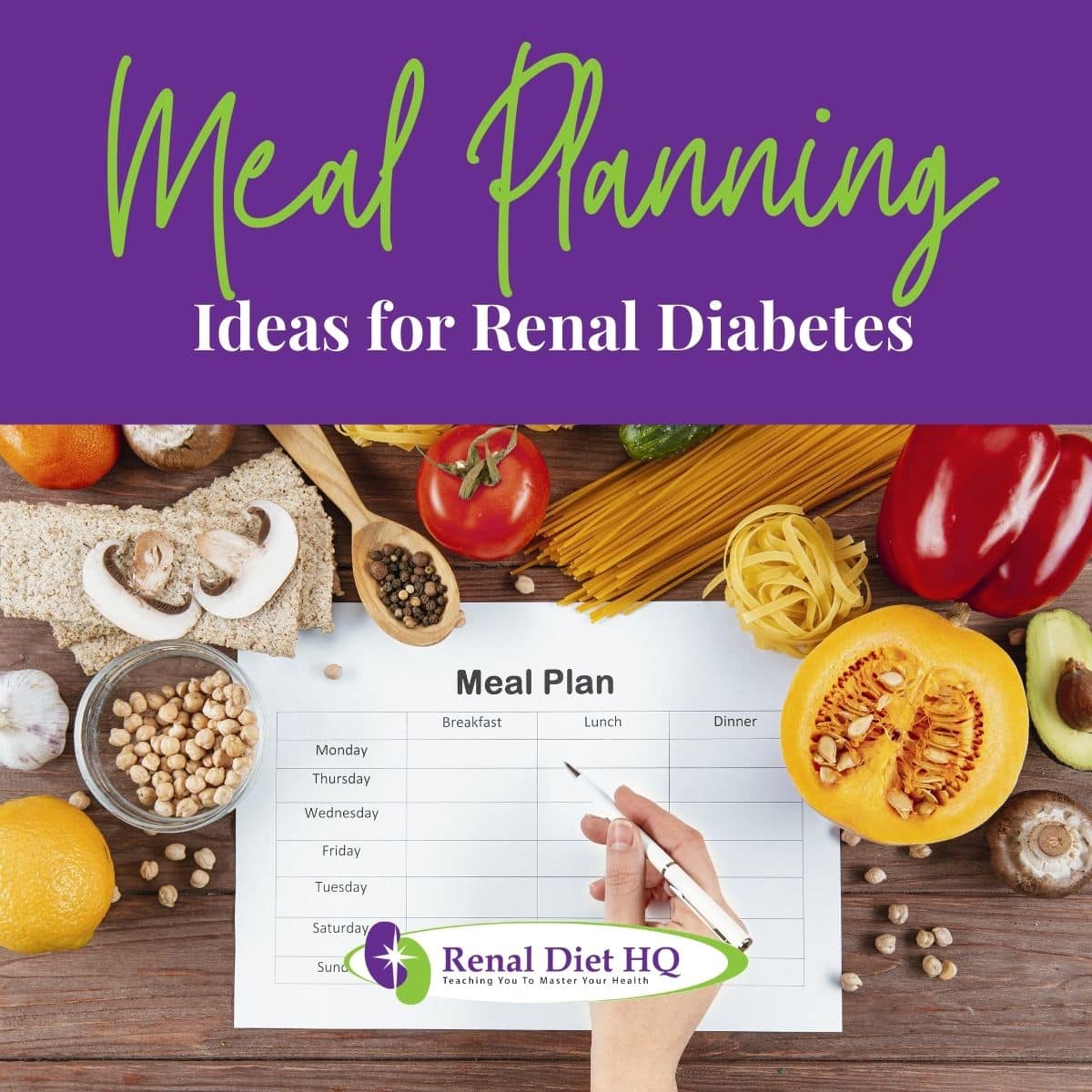
Meal Planning Ideas for Renal Diabetes
For each meal, you want to have the right balance to maintain proper nutrition and to control blood sugar and kidney function. Planning out each meal makes food decisions much easier. Follow these guidelines for meals and snacks:
Breakfast
The number one rule for any healthy eating plan is to not skip breakfast. Start each day with a healthy balanced breakfast to level out your blood glucose and give yourself the energy to get going.
Example: One egg or low-cholesterol egg substitute, scrambled with chopped bell peppers and/or onion.
Pair with wheat bread or whole-grain bread (instead of white bread) with two teaspoons of low fat cream cheese (instead of full-fat cheese).
Have a small (½ cup) glass of low calorie unsweetened cranberry juice to drink.
You can rest knowing there are renal diet breakfast lunch dinner options out there!
Lunch
Lunch can often be the hardest meal of the day to control, as you might be out and about or at work. Combat this issue by carrying your lunch with you. Not only will it be easier to maintain a kidney healthy diet plan, but it will save you money.
Example: A turkey sandwich made with fresh sliced cooked turkey (deli meats often are pumped with extra sodium) on a Kaiser roll with lettuce and two teaspoons of light mayonnaise.
For a side, a small apple and a serving of low sodium unsalted crackers are good. Have a small glass of sugar free lemonade to drink.
Dinner
For dinner, focus on lean protein and fiber to keep you full and blood sugar levels controlled through the night.
Example: One four ounce grilled chicken breast or fish filet with ½ cup brown rice (instead of white rice) and one ear of corn on the cob.
Are salads good for kidneys? Pair with a small side salad made with ½ cup raw spinach leaves and a few sliced fresh strawberries.
Top with two teaspoons of low sugar balsamic vinaigrette and enjoy a small glass of diet soda (preferably clear sodas such as sprite or ginger ale instead of dark sodas).
Snacks
Snacks are an important part of your meal plan that requires meticulous planning. Not carrying a snack with you can lead to poor decisions when you are out and about and find yourself hungry. Here are some snack ideas:
- 1 cup of air-popped popcorn, plain or seasoned with salt-free butter spray options.
- A handful of baby carrots with a small amount of fat-free low sodium ranch dressing.
- Are apples good for your kidneys ?A small apple or serving of apricot halves.
Working With A Registered Dietitian
Working with a Registered Dietitian is an important step in managing renal diabetes. Seeking advice from such professionals can be the difference between success and failure when it comes to meal planning, food tracking, portion control, and meal timing.
Here are three essential steps that you should consider taking:
- Identify a registered dietitian who specializes in renal diabetes diets.
- Have your dietitian develop a personalized plan for you based on your health goals.
- Follow their instructions closely by keeping track of meals and portion sizes throughout the day.
By following these steps, sticking to the recommended dietary guidelines, and regularly monitoring your blood sugar levels, you’ll have the best chance at successfully controlling your condition through nutrition therapy.
FAQs for Renal Diabetes Menus
The difference between a renal diabetes diet and a regular diabetes diet is quite significant.
With a renal diabetes diet, you'll need to be mindful not only of food restrictions, portion sizes, and carbohydrate counting but also on the amounts of protein, sodium, potassium, and phosphorus that you consume.
If you have both CKD and diabetes, a renal diabetes diet is recommended to have better control of your blood glucose levels, as well as symptoms of kidney disease. Make sure to dive into this info on chronic kidney disease and diabetes.
Eating a renal diabetes diet has long-term health benefits that go beyond simply controlling glucose levels. This type of meal plan focuses on avoiding processed foods, managing portion sizes, eating slowly and incorporating fiber into meals.
All of these elements together help to ensure healthier blood sugar levels and overall well being in the long term.
With careful monitoring and sticking to this kind of diet, it is possible for people with kidney disease and diabetes to also minimize progression of their disease.
Following a renal diabetes diet can be challenging, but it doesn't have to be difficult! Knowing the right supplements, alternative snacks, and carb/protein sources is key.
Depending on your individual nutritional needs and laboratory test results, there may be some supplements that could be helpful for you.
Consult with your doctor first before starting on any supplement to make sure you get maximum benefits and minimal risks.
A renal diabetes diet is a meal plan that focuses on foods that help keep blood sugar levels stable while also supporting kidney health.
While pregnant or breastfeeding, it can be safe to follow this type of diet with the right nutrition advice and meal planning.
It's important to avoid foods high in fat and sodium, as well as unhealthy processed snacks.
Nutritionists recommend adding plenty of colorful fruits and vegetables for essential vitamins and minerals. When considering which menu plans are best for you, it’s wise to consult your doctor first.
With their guidance and support, following a renal diabetes diet during pregnancy or breastfeeding can provide beneficial nutrients for both mom and baby!
You Can Conquer Renal Diabetes, One Meal At A Time
Following a renal diabetes diet can be a challenge, but it's worth it in the long run. Not only is it beneficial for your overall health, but also helps to regulate blood glucose levels and maintain kidney function.
When done properly, you will feel more energized and have fewer symptoms of diabetes and renal disease as well.
For those with renal diabetes, it is best to consult their doctor or nutritionist before making any drastic changes to their diet to ensure they are getting all the necessary nutrients while following this specialized eating plan.
Living with renal diabetes can be difficult, but finding a proper balance in your daily life can mean all the difference.

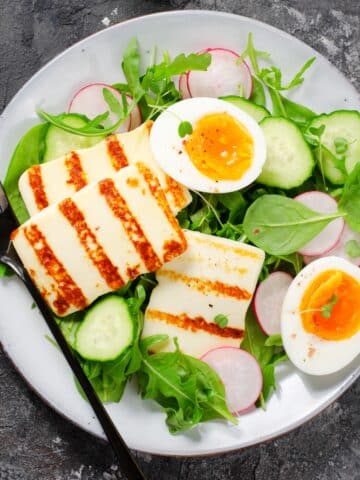
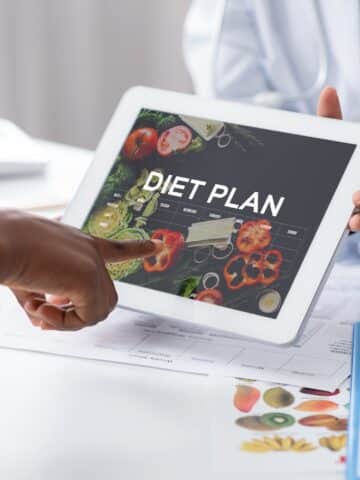
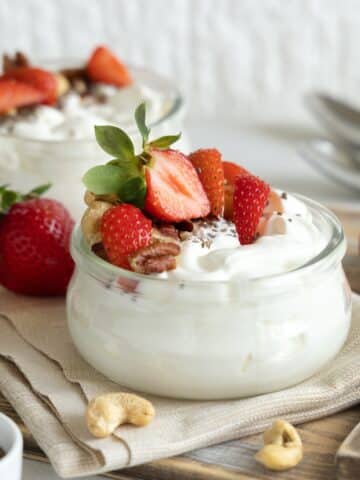
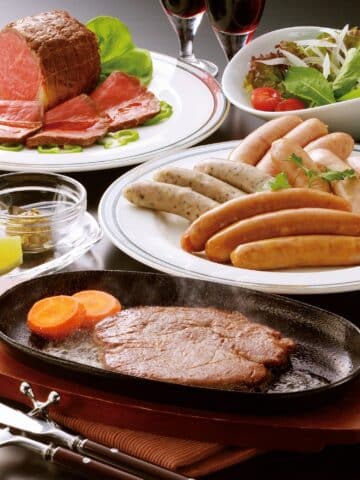
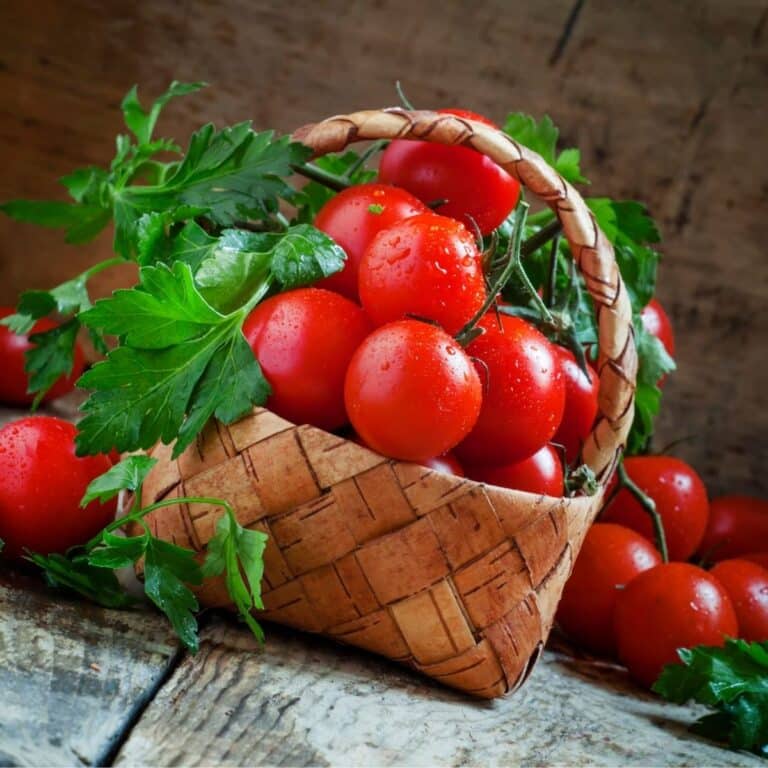
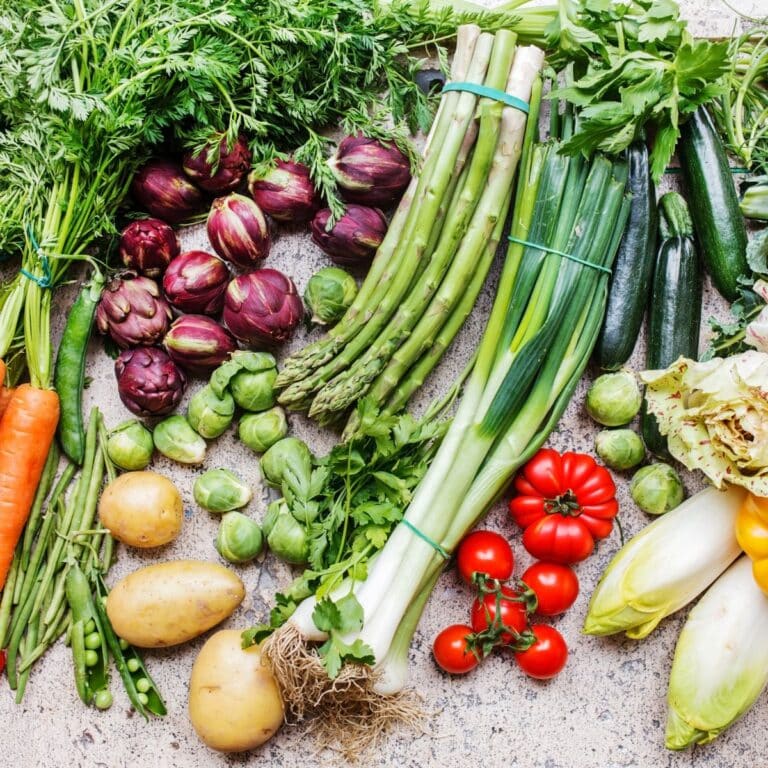
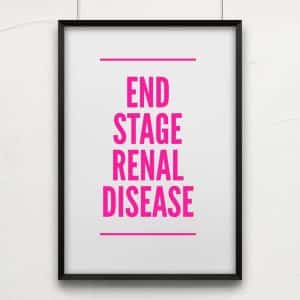
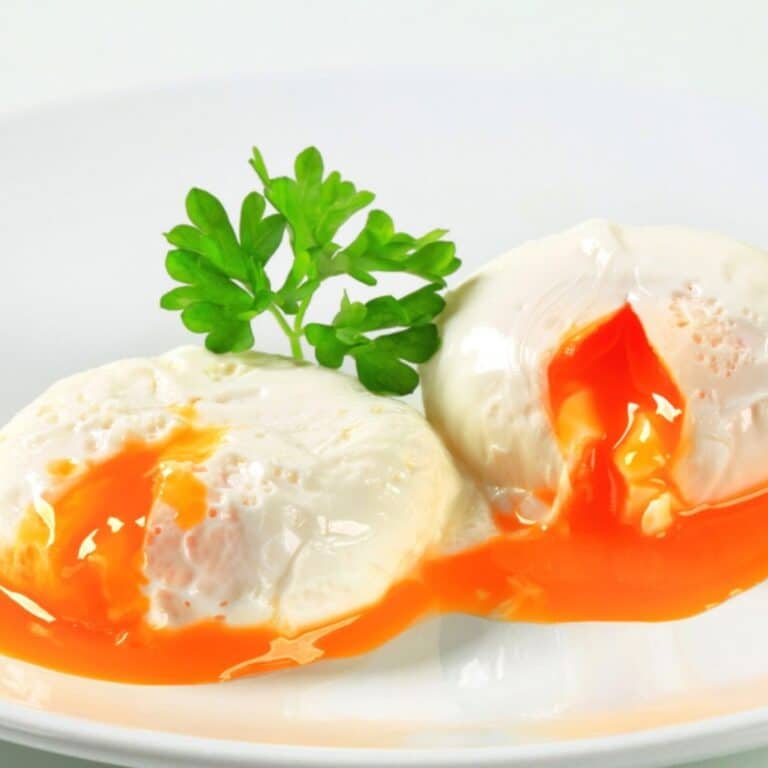

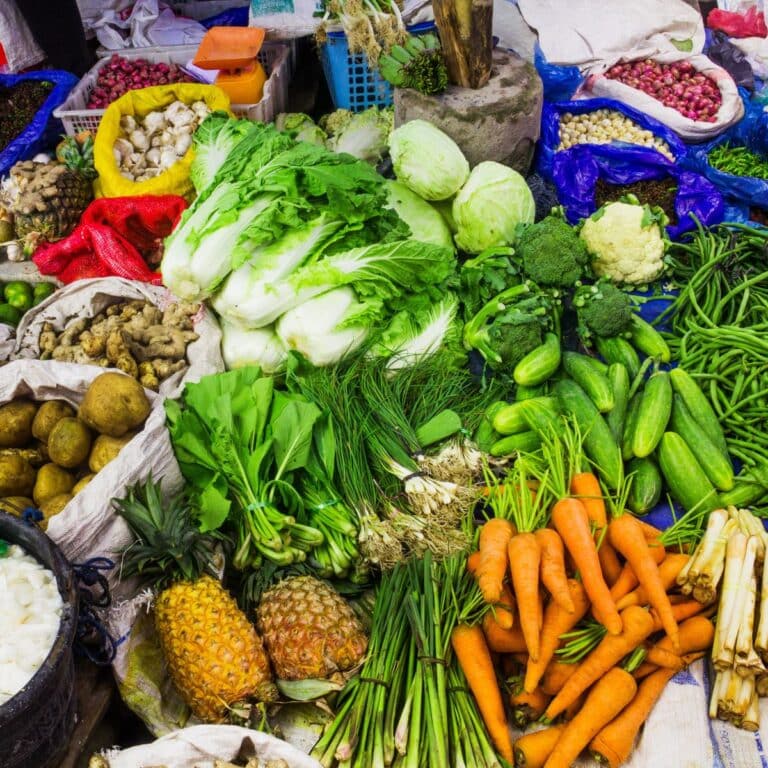

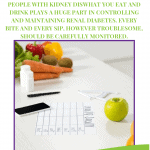
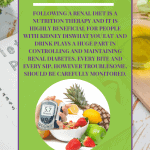




I was on 2 medications which were constantly being increased and the side effects were awful. This nutritional plan got my pancreas working normally again and reversed my diabetes: http://www.diabetes14.com